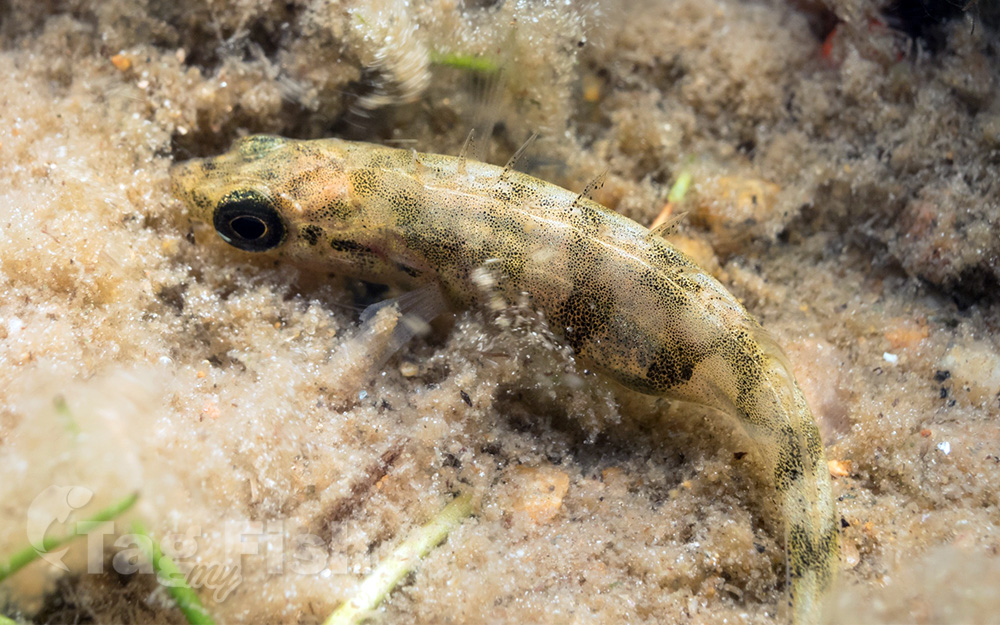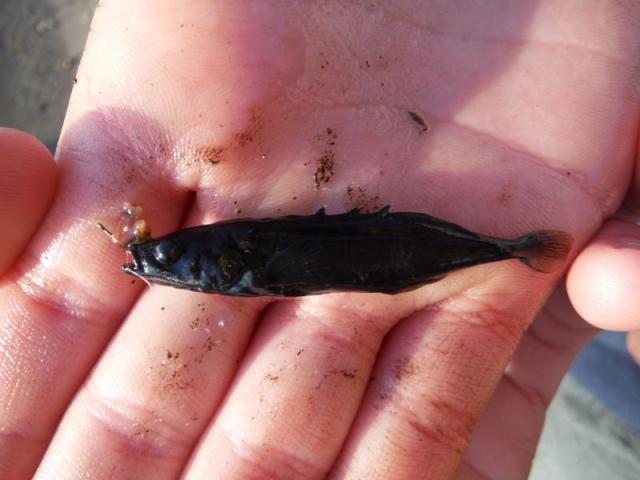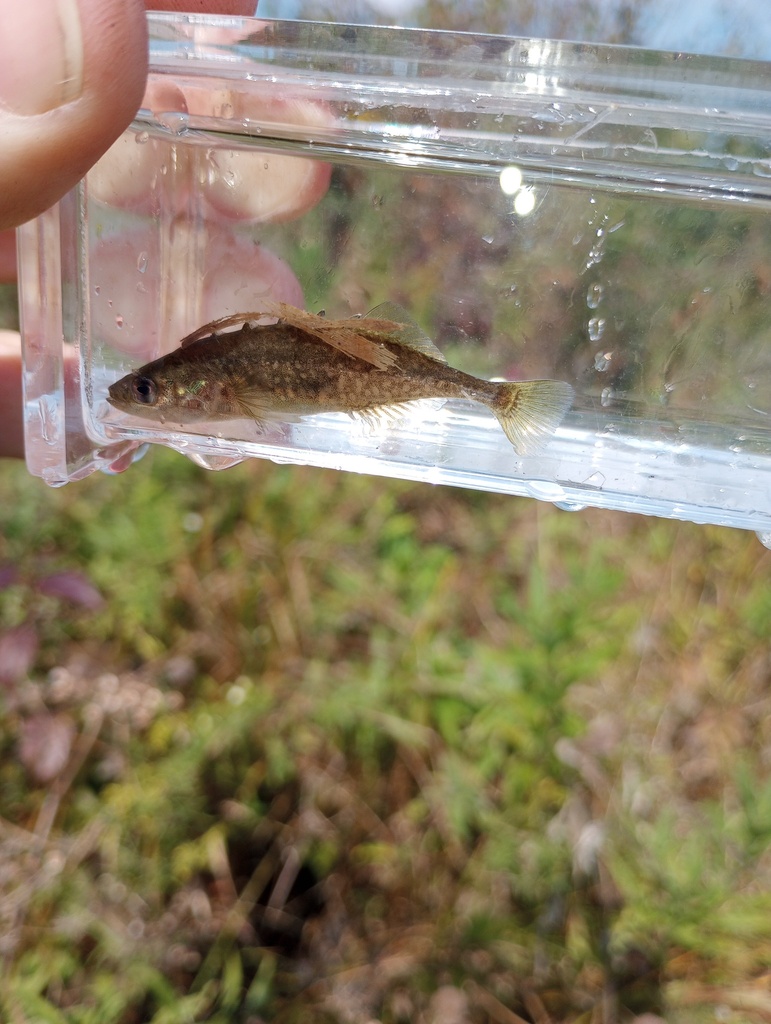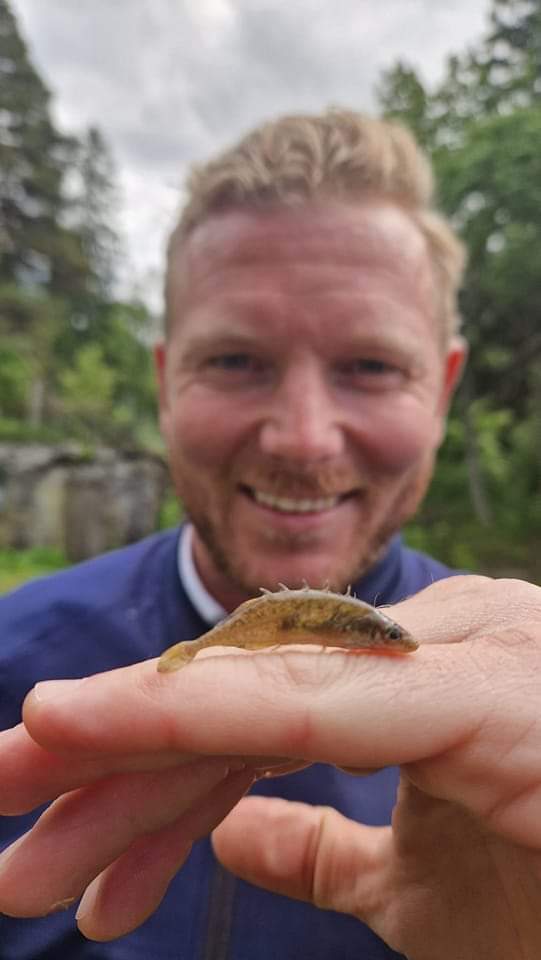Brook stickleback
(Culaea inconstans)

Classification
General data
The brook stickleback (Culaea inconstans) is a small freshwater fish that is distributed across the US and Canada. It grows to a length of about 2 inches. It occupies the northern part of the eastern United States, as well as the southern half of Canada. Small populations are scattered throughout the Mississippi-Great Lakes basin extending to Colorado, New Mexico, Kentucky, Tennessee, etc., though some of these areas are not native to the species.
This small fish inhabits clear, cool streams and lakes.
They eat small invertebrates, algae, insect larvae, and occasionally their own eggs. They are also preyed upon by smallmouth bass and northern pike. Feedin time is usually dawn and sunset. The brook stickleback does have active competition mostly from minnows, but feeding times are different, along with diet.
Spawning occurs in midsummer. Males secure a territory, build a nest, and mate with females. Males provide protection for the eggs, ward off predators, and usually die later in the season. This is considered an annual species. The nests are built out of aquatic grasses. Though the brook stickleback is not considered a threatened species, deforesting and changing waters are altering ecosystems of the species. Harvesting of trees around riparian environments is having a large effect of the stream ecosystem where the brook stickleback resides.
The brook stickleback has a tapered body with a slim caudal peduncle and a fan-shaped tail. It very much resembles the ninespine stickleback (Pungitius pungitius) but only has five, or occasionally six, dorsal spines. It also lacks lateral bony plates. Most of the year the colouring is grayish or olive green with a varying amount of indistinct mottling, but during the spawning season, males are nearly black and females have darker and lighter patches.
This species grows to a maximum length of 5 to 8 cm (2 in).
Culaea inconstans occurs throughout the southern half of Canada and the northern part of the eastern United States. It is one of the smallest fishes in the region. Brackish water populations are uncommon but certainly exist. It extends down to the southern reaches of the Mississippi River – Great Lakes drainage basins. Populations also exist in Colorado and Nebraska to the west, and in Alberta, Saskatchewan, Manitoba, and the Northwest Territories to the north. Though these are typically the native ranges of the brook stickleback, the species has been introduced to Alabama, Kentucky, Tennessee, northwestern Colorado, northeastern Utah and California, and even in parts of South Dakota and Washington State. Certain geographical distribution studies have found that certain populations may have been native in New Mexico and still exist today.
Nebraska does have brook stickleback populations, but they are generally found in small streams in the northern portion of the state. The fish have been found in Nebraska since the early part of the nineteen hundreds. River drainages that sustain brook stickleback populations are the Loup, Middle Platt, Niobrara, and smaller distributions in the Lower Platte, Missouri River tributaries, North Platte, and South Platte. Though the species appears to have an abundant distribution across North America, the Nature Conservancy has declared the species to be a S3 (vulnerable) level. Reasons for the level of vulnerability could be due to increased dam construction, especially in the eastern United States. This can lead to a destruction of habitat, increase in silted waterways, alteration of stream nutrient transport, and damaged breeding grounds. Alteration of stream dynamics could also lead to a change in predator frequency, thus exposing the brook stickleback to unforeseen predators.
Introduction in Europe
The brook stickleback was introduced in upper drainage of the River Inn in Bavaria, and in the 1960s was accidentally introduced alongside Micropterus species to Lake Lohjanjarvi in southern Finland, where it has become established.














